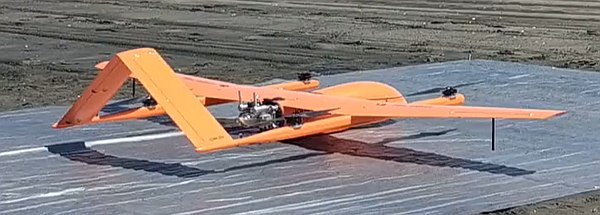Podcast: Play in new window | Download (Duration: 32:46 — 22.5MB)
D.C. court rules on drone Remote ID case, reconnaissance drones for Ukraine, more drones going to Mars, fried chicken coming by drone, lifeguard drones meet U.S. resistance, mapping a mountain with a UAV, NASA and Zipline partnership, and United Airlines sends a pre-delivery payment to Archer.
UAV News
D.C. Circuit Upholds Drone Remote ID Rule
Court Upholds Remote ID For Drones
RaceDayQuads and drone operator Tyler Brennan sued to vacate the FAA’s drone Remote ID rule saying the rule amounted to “constant, warrantless governmental surveillance in violation of the Fourth Amendment.” The D.C. Circuit’s U.S. Court of Appeals has ruled and upheld the constitutionality of the FAA’s Remote ID requirement saying “drone pilots generally lack any reasonable expectation of privacy in the location of their drone systems during flight.” Also that the rule was properly developed.
Ukrainian defenders will receive 20 Fly Eye reconnaissance drones from the Drone Army
Included in the purchase are two control stations and 20 Fly Eye drones, 78 Matrice multicopters, and two ground systems for 20 Warmate kamikaze attack drones. The Fly Eye drones are designed and built by WB Electronics in Poland, can fly up to 160 kilometers per hour, have fully autonomous take-off and landing capability but can be launched by hand.
Video: NASA plans to send 2 more drones to Mars
Indian multinational English news channel WION says NASA is not going to scrap their original plan of sending another rover to Mars and instead send two new helicopter drones to would retrieve the samples from the Perseverance rover, then transport them to a rocket that will return them to Earth.
See also, Mars Sample Return Mission, and NASA, ESA to Discuss Mars Sample Return Mission.
Lifeguard drones can save lives. But U.S. beaches might not buy them.
Drones are being used by lifeguards at some European beaches with 22 of them in Spain using the General Drones Auxdron LFG, which costs 40,000 euros. A monthly fee of 15,000 euros pays for a trained pilot. In the US, there is a lifeguard shortage as younger Americans found other, higher-paying jobs during the pandemic. US lifeguard officials recognize the value of these drones but say widespread adoption is limited by their high cost.
KFC takes to the sky with drone-delivered fried chicken
KFC is partnering with Wing in Queensland in a trial to deliver fried chicken. The drone can carry up to 1.5 kilograms, not enough for the full bucket of chicken. But it can carry smaller orders.
Drone deliveries consume 94% less energy per parcel than diesel trucks
A new study by Carnegie Mellon University says drones carrying small packages emit 84% less greenhouse gas emissions than a diesel truck and use 94% less energy. Researchers used small quadcopter drones carrying packages weighing no more than half a kilogram to a single destination. Data from almost 200 flights were used to measure drone energy consumption and greenhouse gas emissions.
See also: Rodrigues and Samaras Suggest Drones for Efficient Last-Mile Deliveries and Drone flight data reveal energy and greenhouse gas emissions savings for very small package delivery published in Patterns.
Conquering Elbrus: Mapping Europe’s Highest Peak with a UAV
A FIXAR 007 drone is being used to inspect a cable car route and to map the area for the potential future cable car extension The FIXAR 007 is a fully autonomous, VTOL fixed-wing drone for commercial and industrial applications. At 18,510 feet, Mount Elbrus poses some environmental challenges that were not met by previous systems.
Video: FIXAR conquered Elbrus!
NASA and Zipline Sign Space Act Agreement to Pursue m:N Drone Operations
NASA announced it signed a Space Act Agreement with Zipline “to pursue a future vision of U.S. aviation that includes delivery drones and air taxis.” m:N operations refers to the ratio of multiple operators (m) controlling multiple vehicles (N). The Zipline m:N operations model for medical drone delivery is already being used at scale in Africa. As well as operations in the U.S., Japan, Ghana, and Rwanda.
A Space Act Agreement (SAA) is a legal instrument that formulates partnerships with NASA. In March 2021, NASA formed the Multi-Vehicle (m:N) Working Group “…to bring together a broad collective of interested stakeholders from government, industry, and academia to identify and reduce barriers to m:N operations…”
Archer Receives $10 million Pre-Delivery Payment From United Airlines for 100 eVTOL Aircraft; Advances Path to Commercialization
In 2021, United Airlines conditionally ordered 100 Archer eVTOL aircraft. Now United has made a $10 million cash pre-delivery payment which signals that the airline is serious. The Archer production aircraft Preliminary Design Review (PDR) has been completed and establishes aircraft specifications and manufacturing requirements.
UAV Video of the Week
Watch how Amazon is preparing for safe drone delivery

